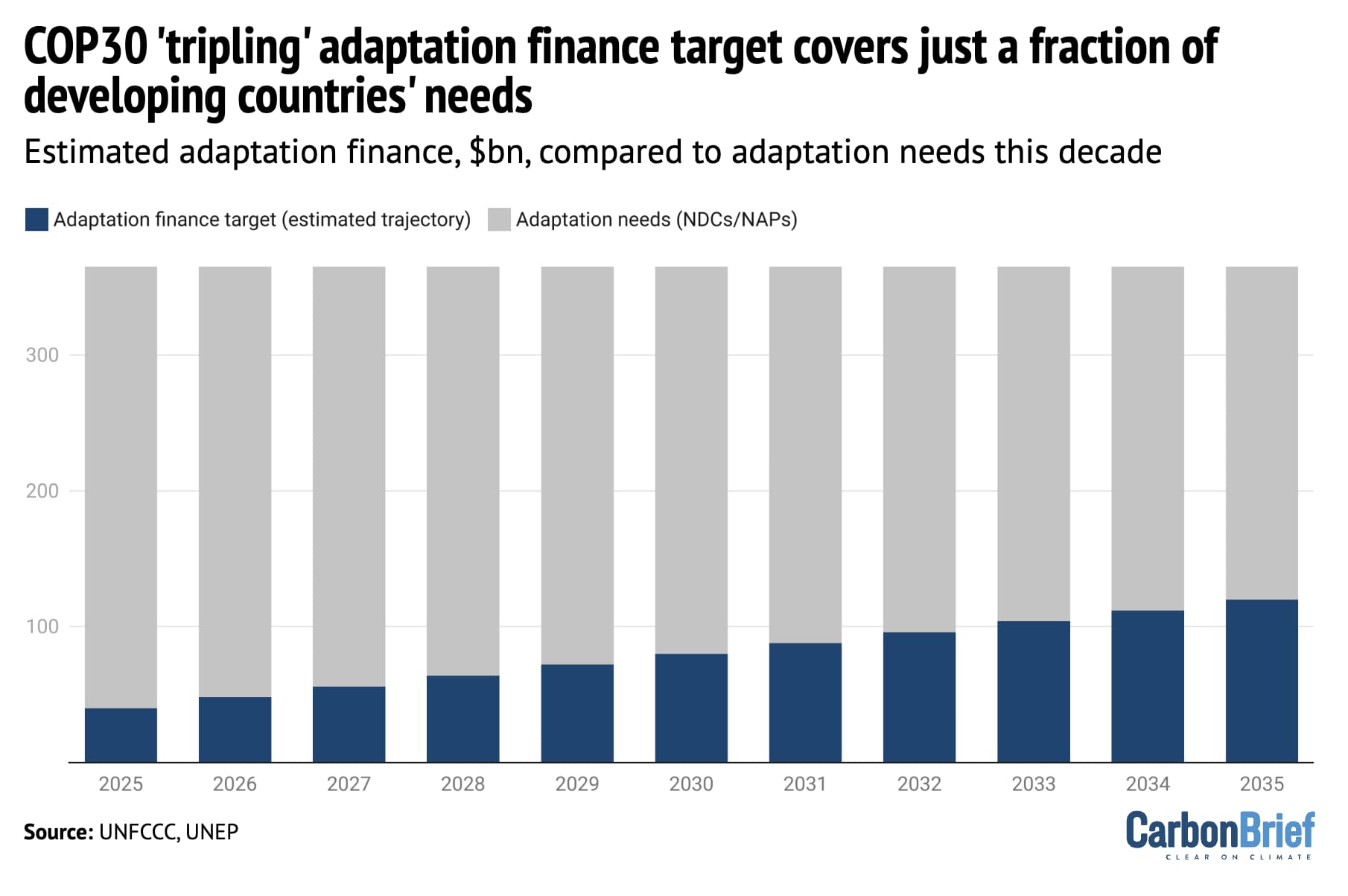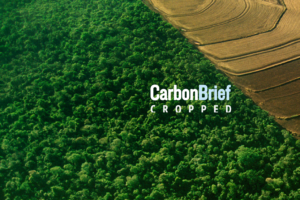中国的气候和能源政策呈现出一种悖论:在以惊人的速度发展清洁能源的同时,也未停下新建燃煤电厂的步伐。
仅在2023年,中国就新建了70吉瓦(GW)的煤电装机容量,比2019年增长了四倍,占当年全球新增煤电装机容量的95%。
煤电产能的激增引发了人们对中国二氧化碳(CO2)排放和气候目标能否实现,以及对未来出现搁浅资产风险的担忧。
由于光伏和风能发电量不稳定,中国政府将煤炭作为保障能源安全和满足快速增长的用电高峰的手段。
与此同时,中国的电力行业在成本、需求模式、监管和市场运作方面正在发生重大变化。我们的新研究表明,用于证明新煤炭产能合理性的传统经济计算方式可能已经过时。
我们使用一个简单的分析指标来评估能满足用电高峰需求的最经济方式是什么。结果表明,光伏加电池储能的组合可能是比新建煤电更具成本效益的选择。
中国电力格局发生了怎样的变化?
在过去十年里,可再生能源和电池储能的成本大幅下降,高峰时段的住宅和商业用电需求激增,电力交易市场获得了更大的吸引力。
与此同时,中国还宣布了“双碳”目标,即在2030年前实现碳达峰、2060年前实现碳中和。鉴于这些转型,建设更多未减排的煤电厂与中国的长期气候承诺相冲突,而且对满足用电需求对增长来说,可能不再是最具成本效益的选择。它还占用了清洁能源系统转型急需的资金。
替代指标如何评估成本?
我们的研究引入了一种替代指标,用于计算在满足不断增长的高峰用电需求的情况下,所需的最优成本投资。

这一指标,即“净容量成本”(net capacity cost),是满足用电高峰需求所需的基础设施投资的年化固定成本,减去该设施带给电力市场的收入,或其“系统价值”(system value)。 在该指标中,负数意味着这些投资将带来利润,而非支出。
为了探索在中国使用的情境,我们使用了一个简单的例子:在一个假定省份,高峰用电需求增加了1500兆瓦(MW)、全年需求增加了6570吉瓦时(GWh)。
然后,我们概述了满足高峰和全年能源需求的五种策略(情况),其涵盖了从严重依赖煤电到光伏和电池储能相结合的方式。
在不同的案例中,资源衡量的规模基于它们能够可靠地满足高峰供应需求和年度能源需求的程度。
- 情况1:新的煤炭发电能力可满足高峰和年度能源需求的所有增长。
- 情况2:光伏可满足70%的年度能源需求增长,煤炭可满足30%的年度能源需求增长;光伏可满足525兆瓦的高峰供应需求(由于光伏发电可能不在高峰期间,因此基于“容量可信度”进行折减),而煤电可提供剩余的975兆瓦。
- 情况3:光伏可满足所有年度能源需求增长;光伏和煤炭均可满足750兆瓦的高峰供应需求,同样通过容量可信度对光伏发电量进行折减。
- 情况4:光伏满足所有年度能源需求增长;光伏和电池均为高峰供电需求提供750兆瓦;电池提供调频储备(用于管理精确至分钟的供需差异的备用电源)。
- 情况5:光伏满足所有年度能源需求增长;广泛和电池均为高峰供电需求提供750兆瓦;电池提供能源套利(在价格或成本较低时充电,在价格或成本较高时放电)。
如下图所示,我们针对每种情况都计算了单个资源(煤、电池或光伏),以及整个系统每年获得1千瓦(kW)发电容量的年净成本,单位为人民币元。
表上半部分的资源净容量成本是指该资源的净成本(即年化固定成本减去该资源从提供能源和辅助服务,如调频,所获得的年收入)。正数表示电网运营商在增加或获取该资源时的净成本。
表下半部分的系统总净容量成本,是在每种情况下利用资源组合满足高峰需求增长的净成本。
我们用于计算系统净成本的权重是基于装机容量与高峰需求增长的比率。
不同能源组合满足用电需求的成本
| 情况 1 | 情况 2 | 情况 3 | 情况 4 | 情况 5 | |
|---|---|---|---|---|---|
| 资源净容量成本 (元/千瓦/年, 每千瓦装机容量) | |||||
| 煤炭 | 424 | 424 | 512 | ||
| 电池 | 248 | 781 | |||
| 光伏 | -128 | -128 | -128 | -128 | |
| 系统净容量成本 (元/千瓦/年, 每千瓦满足高峰用电需求且折减容量可信度后) | |||||
| 煤炭 | 471 | 306 | 236 | ||
| 电池 | 138 | 434 | |||
| 光伏 | -223 | -319 | -319 | -319 | |
| 总计 | 471 | 83 | -83 | -181 | 115 |
为了对这一简单分析进行压力测试,我们研究了不同来源的各种价格的敏感性。
由于中国的光伏价格已经很低,我们的敏感性分析主要集中在煤炭、电池和其他分析所需投入的价格上。
满足高峰用电需求最经济的方法是什么?
我们的结果表明,当电池储能提供调频储备时(情况4),光伏和储能的组合是满足高峰用电需求增长最具成本效益的选择。
在这种组合下,每获得1千瓦发电装机容量,电网运营商的成本为-181元(约-25美元或-20英镑)。
相比之下,新建煤电产能以满足高峰用电需求增长(情况1)是最昂贵的方案,每获得1千瓦装机容量的净容量成本为471元(约合65美元或52英镑)。
情况3,即大型煤电厂仅用作备用电源(几乎不发电),在中国可能出于政治原因而至少在短期内不可行。
另外两种情况(情况2和情况5)更具可比性,但鉴于自本分析报告发布以来,电池价格下降了30%以上,约为每瓦时(Wh)1元人民币(约合0.14美元或0.11英镑),因此情况5中的电池可能比情况2中的煤炭更具经济吸引力。
我们的解决方案如何助力中国实现气候目标?
我们的分析表明,为了应对不断变化的形势,在满足中国日益增长的能源需求的同时,实现其气候目标的近期战略是将电池储能纳入电力市场。
目前,中国政府允许包括电池在内的“新型储能”参与电力市场。然而,详细规定尚不明确,电池的参与可以更简单。
例如,电池储能不被允许提供“运转储备”,即为应对意外的供需误差所预留的发电量。如果允许电池储能提供运转储备,将增强其商业价值。
允许电池储能更多地参与市场将促进电池储能系统的持续创新和降低成本,同时为系统运营商提供宝贵的运营经验。
这种策略将与市场效益相符,并反映美国和欧洲近期的电力市场经验。
这也将有助于解决近期的产能和能源需求,因为电池和光伏发电通常比燃煤电厂的建设速度更快。
此外,它还有助于缓解未来新增燃煤发电与可再生能源之间的冲突。主要作为可再生能源发电备用电源的新建燃煤电厂要么很少运营,要么侵占了其他现有煤炭发电厂的运营时间和净收入,从而产生新搁浅资产的风险。
通过继续进行电力市场改革,也将促进对可再生能源发电和电力储存进行更有效的投资。
允许市场制定批发市场电价、允许可再生能源发电和电力储存参与批发市场,这可以提高其收入和利润。
此外,改革还将鼓励高效利用储能,这是我们的关键发现。储能可以为电力系统提供多种功能;批发电价有助于引导储能运营以最低的成本实现具有最高价值的功能。
中国国家能源局最近发出指令,要求将新型储能设施(非抽水蓄能)纳入电网调度运行,这是向我们概述的改革迈出的一步。
可能需要进一步确定适当的补偿机制,例如在某些省份对此类储能设施提供的所有服务进行容量补偿,以促进这些储能设施的可持续发展和并网。
最后,仅靠增加供应不太可能成为满足中国电力需求增长的最低成本方式。提高终端使用效率和“需求响应”也有助于降低供电的总体成本。
随着中国电力市场改革的不断深入,连接多个省份的区域市场设计,以及鼓励省份间资源共享的区域资源充裕性规划,也有助于以最具成本效益和最低碳的方式满足中国不断增长的用电量和高峰需求。
The post 嘉宾来稿:满足中国增长的用电需求 光伏加储能“比新建煤电更实惠” appeared first on Carbon Brief.
Greenhouse Gases
Our Fix Our Forests advocacy in 2025
Our Fix Our Forests advocacy in 2025
By Elissa Tennant
Healthy forests are a key part of the climate puzzle — and they’ve been a big part of our advocacy in 2025!
In January of this year, CCL volunteers sent 7,100 messages to Congress urging them to work together to reduce wildfire risk. Soon after, the Fix Our Forests Act was introduced in the House as H.R. 471 and passed the House by a bipartisan vote of 279–141.
At our Conservative Climate Conference and Lobby Day in March, we raised the Fix Our Forests Act as a secondary ask in 47 lobby meetings on Capitol Hill. The next month, an improved version of the bill was then introduced in the Senate as S. 1462 and referred to the Senate Agriculture Committee.
The bill was scheduled for a committee vote in October. CCLers placed more than 2,000 calls to senators on the committee and generated a flurry of local media in their states before the vote. In October, the bill passed the Senate Agriculture Committee with strong bipartisan support.
It’s clear that this legislation has momentum! As the Fix Our Forests Act now awaits a floor vote in the Senate, let’s take a look back at our 2025 advocacy efforts to advance this bill — and why it’s so important.
Protecting forests and improving climate outcomes
Wildfires are getting worse. In the U.S., the annual area burned by wildfires has more than doubled over the past 30 years. In California alone, the acreage burned by wildfires every year has more than tripled over the past 40 years.
American forests currently offset 12% of our annual climate pollution, with the potential to do even more. We need to take action to reduce wildfire, so forests can keep doing their important work pulling climate pollution out of the atmosphere.
The bipartisan Fix Our Forests Act:
- Protects America’s forests by supporting time-tested tools, like prescribed fire and reforestation, that make our forests healthy and able to better withstand and recover from severe wildfire and other extreme weather.
- Protects communities across the nation by reducing wildfire risks to people, homes, and water supplies and adopting new technologies.
- Protects livelihoods by supporting rural jobs and recreation areas and sustaining the forests that house and feed us.
CCL supports this bill alongside many organizations including American Forests, The Nature Conservancy, Environmental Defense Fund, National Audubon Society, The Western Fire Chiefs Association, The Federation of American Scientists and more.
A deeper dive into our efforts
All year long, CCL’s Government Relations staff has been in conversation with congressional offices to share CCL’s perspective on the legislation and understand the opportunities and challenges facing the bill. Our Government Relations team played a key role in helping us understand when and how to provide an extra grassroots push to keep the bill moving.
Starting Sept. 9 through the committee vote, CCLers represented by senators on the Senate Agriculture Committee made 2,022 calls to committee members in support of FOFA. CCL also signed a national coalition letter to Senate leadership in support of the bill, joining organizations like the American Conservation Coalition Action, Bipartisan Policy Center Action, the International Association of Fire Chiefs, and more.
In October, we launched a local media initiative in support of FOFA, focused on states with senators on the Agriculture Committee. Volunteers published letters to the editor and op-eds in California, Minnesota, Colorado, and more. In one state, the senator’s office saw a CCLer’s op-ed in the local newspaper, and reached out to schedule a meeting with those volunteers to discuss the bill! CCL’s Government Relations team joined in to make the most of the conversation.
As soon as the committee vote was scheduled for October 21, our Government Relations staff put out a call for volunteers to generate local endorsement letters from trusted messengers. CCL staff prepared short endorsement letter templates for each state that chapters could personalize and submit to their senator’s office. Each version included clear instructions, contact info, and space for volunteers to add their local context, like a short story or relevant example of how wildfires have impacted their area.
Then, CCL state coordinators worked with the CCL chapters in their states to make sure they prepared and sent the signed letters to the appropriate senate office, and to alert CCL’s Government Affairs staff so they could follow up and keep the conversation going on Capitol Hill.
Individually, our voices as climate advocates struggle to break through and make change. But it’s this kind of coordinated nationwide effort, with well-informed staff partnering with motivated local volunteers, that makes CCL effective at moving the needle in Congress.
On October 21, the Fix Our Forests Act officially passed the Senate Agriculture Committee with a vote of 18-5.
Building on the momentum
After committee passage, FOFA is now waiting to be taken up by the full Senate for a floor vote. It’s not clear yet if it will move as a standalone bill or included in a package of other legislation.
But to continue building support, we spent a large portion of our Fall Conference training our volunteers on the latest information about the bill, and we included FOFA as a primary ask in our Fall Lobby Week meetings.
Volunteers are now messaging all senators in support of FOFA. If you haven’t already, add your voice by sending messages to your senators about this legislation. With strategy, organization, and a group of dedicated people, we can help pass the Fix Our Forests Act, reducing wildfire risk and helping forests remove more climate pollution.
Help us keep the momentum going! Write to your Senator in support of the Fix Our Forests Act.
The post Our Fix Our Forests advocacy in 2025 appeared first on Citizens' Climate Lobby.
Greenhouse Gases
DeBriefed 5 December: Deadly Asia floods; Adaptation finance target examined; Global south IPCC scientists speak out
Welcome to Carbon Brief’s DeBriefed.
An essential guide to the week’s key developments relating to climate change.
This week
Deadly floods in Asia
MOUNTING DEVASTATION: The Associated Press reported that the death toll from catastrophic floods in south-east Asia had reached 1,500, with Indonesia, Sri Lanka and Thailand most affected and hundreds still missing. The newswire said “thousands” more face “severe” food and clean-water shortages. Heavy rains and thunderstorms are expected this weekend, it added, with “saturated soil and swollen rivers leaving communities on edge”. Earlier in the week, Bloomberg said the floods had caused “at least $20bn in losses”.
CLIMATE CHANGE LINKS: A number of outlets have investigated the links between the floods and human-caused climate change. Agence France-Presse explained that climate change was “producing more intense rain events because a warmer atmosphere holds more moisture and warmer oceans can turbocharge storms”. Meanwhile, environmental groups told the Associated Press the situation had been exacerbated by “decades of deforestation”, which had “stripped away natural defenses that once absorbed rainfall and stabilised soil”.
‘NEW NORMAL’: The Associated Press quoted Malaysian researcher Dr Jemilah Mahmood saying: “South-east Asia should brace for a likely continuation and potential worsening of extreme weather in 2026 and for many years.” Al Jazeera reported that the International Federation of Red Cross and Red Crescent Societies had called for “stronger legal and policy frameworks to protect people in disasters”. The organisation’s Asia-Pacific director said the floods were a “stark reminder that climate-driven disasters are becoming the new normal”, the outlet said.
Around the world
- REVOKED: The UK and Netherlands withdrew $2.2bn of financial backing from a controversial liquified natural gas (LNG) project in Mozambique, Reuters reported. The Guardian noted that TotalEnergies’ “giant” project stood accused of “fuelling the climate crisis and deadly terror attacks”.
- REVERSED: US president Donald Trump announced plans to “significantly weaken” Biden-era fuel efficiency requirements for cars, the New York Times said.
- RESTRICTED: EU leaders agreed to ban the import of Russian gas from autumn 2027, the Financial Times reported. Meanwhile, Reuters said it is “likely” the European Commission will delay announcing a plan on auto sector climate targets next week, following pressure to “weaken” a 2035 cut-off for combustion engines.
- RETRACTED: An influential Nature study that looked at the economic consequences of climate change has been withdrawn after “criticism from peers”, according to Bloomberg. [The research came second in Carbon Brief’s ranking of the climate papers most covered by the media in 2024.]
- REBUKED: The federal government of Canada faced a backlash over an oil pipeline deal struck last week with the province of Alberta. CBC News noted that First Nations chiefs voted “unanimously” to demand the withdrawal of the deal and Canada’s National Observer quoted author Naomi Klein as saying that the prime minister was “completely trashing Canada’s climate commitments”.
- RESCHEDULED: The Indonesian government has cancelled plans to close a coal plant seven years early, Bloomberg reported. Meanwhile, Bloomberg separately reported that India is mulling an “unprecedented increase” in coal-power capacity that could see plants built “until at least 2047”.
$518 billion a year
The projected coastal flood damages for the Asia-Pacific region by 2100 if current policies continue, according to a Scientific Reports study covered this week by Carbon Brief.
Latest climate research
- More than 100 “climate-sensitive rivers” worldwide are experiencing “large and severe changes in streamflow volume and timing” | Environmental Research Letters
- Africa’s forests have switched from a carbon sink into a source | Scientific Reports
- Increasing urbanisation can “substantially intensify warming”, contributing up to 0.44C of additional temperature rise per year through 2060 | Communications Earth & Environment
(For more, see Carbon Brief’s in-depth daily summaries of the top climate news stories on Monday, Tuesday, Wednesday, Thursday and Friday.)
Captured

A new target for developed nations to triple adaptation finance by 2035, agreed at the COP30 climate summit, would not cover more than a third of developing countries’ estimated needs, Carbon Brief analysis showed. The chart above compares a straight line to meeting the adaptation finance target (blue), alongside an estimate of countries’ adaptation needs (grey), which was calculated using figures from the latest UN Environmental Programme adaptation gap report, which were based on countries’ UN climate plans (called “nationally determined contributions” or NDCs) and national adaptation plans (NAPs).
Spotlight
Inclusivity at the IPCC
This week, Carbon Brief speaks to an IPCC lead author researching ways to improve the experience of global south scientists taking part in producing the UN climate body’s assessments.
Hundreds of climate scientists from around the world met in Paris this week to start work on the Intergovernmental Panel on Climate Change’s (IPCC’s) newest set of climate reports.
The IPCC is the UN body responsible for producing the world’s most authoritative climate science reports. Hundreds of scientists from across the globe contribute to each “assessment cycle”, which sees researchers aim to condense all published climate science over several years into three “working group” reports.
The reports inform the decisions of governments – including at UN climate talks – as well as the public understanding of climate change.
The experts gathering in Paris are the most diverse group ever convened by the IPCC.
Earlier this year, Carbon Brief analysis found that – for the first time in an IPCC cycle – citizens of the global south make up 50% of authors of the three working group reports. The IPCC has celebrated this milestone, with IPCC chair Prof Jim Skea touting the seventh assessment report’s (AR7’s) “increased diversity” in August.
But some IPCC scientists have cautioned that the growing involvement of global south scientists does not translate into an inclusive process.
“What happens behind closed doors in these meeting rooms doesn’t necessarily mirror what the diversity numbers say,” Dr Shobha Maharaj, a Trinidadian climate scientist who is a coordinating lead author for working group two (WG2) of AR7, told Carbon Brief.
Global south perspective
Motivated by conversations with colleagues and her own “uncomfortable” experience working on the small-islands chapter of the sixth assessment cycle (AR6) WG2 report, Maharaj – an adjunct professor at the University of Fiji – reached out to dozens of fellow contributors to understand their experience.
The exercise, she said, revealed a “dominance of thinking and opinions from global north scientists, whereas the global south scientists – the scientists who were people of colour – were generally suppressed”.
The perspectives of scientists who took part in the survey and future recommendations for the IPCC are set out in a peer-reviewed essay – co-authored by 20 researchers – slated for publication in the journal PLOS Climate. (Maharaj also presented the findings to the IPCC in September.)
The draft version of the essay notes that global south scientists working on WG2 in AR6 said they confronted a number of diversity, equity and inclusion (DEI) issues, including “skewed” author selection, “unequal” power dynamics and a “lack of respect and trust”. The researchers also pointed to logistical constraints faced by global south authors, such as visa issues and limited access to journals.
The anonymous quotations from more than 30 scientists included in the essay, Maharaj said, are “clear data points” that she believes can advance a discussion about how to make academia more inclusive.
“The literature is full of the problems that people of colour or global south authors have in academia, but what you don’t find very often is quotations – especially from climate scientists,” she said. “We tend to be quite a conservative bunch.”
Road to ‘improvement’
Among the recommendations set out in the essay are for DEI training, the appointment of a “diversity and inclusion ombudsman” and for updated codes of conduct.
Marharaj said that these “tactical measures” need to occur alongside “transformative approaches” that help “address value systems, dismantle power structures [and] change the rules of participation”.
With drafting of the AR7 reports now underway, Maharaj said she is “hopeful” the new cycle can be an improvement on the last, pointing to a number of “welcome” steps from the IPCC.
This includes holding the first-ever expert meeting on DEI this autumn, new mechanisms where authors can flag concerns and the recruitment of a “science and capacity officer” to support WG2 authors.
The hope, Maharaj explained, is to enhance – not undermine – climate science.
“The idea here was to move forward and to improve the IPCC, rather than attack it,” she said. “Because we all love the science – and we really value what the IPCC brings to the world.”
Watch, read, listen
BROKEN PROMISES: Climate Home News spoke to communities in Nigeria let down by the government’s failure to clean up oil spills by foreign companies.
‘WHEN A ROAD GOES WRONG’: Inside Climate News looked at how a new road from Brazil’s western Amazon to Peru has become a “conduit for rampant deforestation and illegal gold mining”.
SHADOWY COURTS: In the Guardian, George Monbiot lamented the rise of investor-state dispute settlements, which he described as “undemocratic offshore tribunals” that are already having a “chilling effect” on countries’ climate ambitions.
Coming up
- 1-12 December: UN Environment Assembly 7, Nairobi, Kenya
- 7 December: Hong Kong legislative elections
- 11 December: Falkland Islands legislative assembly elections
Pick of the jobs
- Greenpeace International, engagement manager – climate and energy | Salary: Unknown. Location: Various
- The Energy, newsletter editor | Salary: Unknown. Location: Australia (remote)
- University of Groningen, PhD position in motivating people to contribute to societal transitions | Salary: €3,059-€3,881 per month. Location: Groningen, the Netherlands
DeBriefed is edited by Daisy Dunne. Please send any tips or feedback to debriefed@carbonbrief.org.
This is an online version of Carbon Brief’s weekly DeBriefed email newsletter. Subscribe for free here.
The post DeBriefed 5 December: Deadly Asia floods; Adaptation finance target examined; Global south IPCC scientists speak out appeared first on Carbon Brief.
Greenhouse Gases
Cropped 3 December 2025: Extreme weather in Africa; COP30 roundup; Saudi minister interview
We handpick and explain the most important stories at the intersection of climate, land, food and nature over the past fortnight.
This is an online version of Carbon Brief’s fortnightly Cropped email newsletter. Subscribe for free here.
Key developments
COP30 roundup
FOOD OFF THE MENU: COP30 wrapped up in the Brazilian Amazon city of Belém, with several new announcements for forest protection, but with experts saying that food systems were seemingly “erased” from official negotiations, Carbon Brief reported. Other observers told the Independent that the lack of mention of food in some of the main negotiated outcomes was “surprising” and “deeply disappointing”. The outlet noted that smallholder farmers spend an “estimated 20 to 40% of their annual income on adaptive measures…despite having done next to nothing to contribute to the climate crisis”.
‘BITTERSWEET’: Meanwhile, Reuters said that the summit’s outcomes for trees and Indigenous peoples were “unprecedented”, but “bittersweet”. It noted that countries had “unlocked billions in new funds for forests” through the Tropical Forest Forever Facility. (For more on that fund, see Carbon Brief’s explainer.) However, the newswire added, “nations failed to agree on a plan to keep trees standing as they have repeatedly promised to do in recent summits”. Mongabay noted that pledges to the new forest fund totalled “less than a quarter of the $25bn initially required for a full-scale rollout”.
‘MIXED OUTCOMES’: A separate piece in Mongabay said that COP30 “delivered mixed outcomes” for Indigenous peoples. One positive outcome was a “historic pledge to recognise Indigenous land tenure rights over 160m hectares” of tropical forest land, the outlet said. This was accompanied by a monetary pledge of $1.8bn to support “Indigenous peoples, local and Afro-descendant communities in securing land rights over the next five years”, it added. However, Mongabay wrote, there were some “major disappointments” around the summit’s outcomes, particularly around the absence of mention of critical minerals and fossil-fuel phaseout in the final texts.
Africa on edge
SOMALIA DROUGHT: Somalia officially declared a drought emergency last month “after four consecutive failed rainy seasons left millions at risk of hunger and displacement”, allAfrica reported, with 130,000 people in “immediate life-threatening need”. According to Al Jazeera, more than 4.5 million people “face starvation”, as “failed rains and heat devastated” the country, with displaced communities also “escaping fighting” in their villages and aid cuts impacting relief. Down to Earth, meanwhile, covered an Amnesty International report that demonstrated that Somalia failed to “implement a functional social-security system for the marginalised, particularly those negatively affected by drought”.
COCOA CRASH: Ivory Coast’s main cocoa harvest is expected to “decline sharply for [the] third consecutive year” due to erratic rainfall, crop disease, ageing farms and poor investment, Reuters reported. Africa Sustainability Matters observed that the delayed implementation of the EU’s deforestation law – announced last week – could impact two million smallholder farmers, who may see “delays in certification processes ripple through payment cycles and export volumes”. Meanwhile, SwissInfo reported that the “disconnect between high global cocoa prices and the price paid to farmers” is leading to “unprecedented cocoa smuggling” in Ghana.
‘FERTILISER CRISIS’: Nyasa Times reported that, “for the first time”, Malawian president Peter Mutharika admitted that the country is “facing a planting season…for which his government is dangerously unprepared”. According to the paper, Mutharika acknowledged that the country is “heading into the rains without adequate fertiliser and with procurement dangerously behind schedule” at a meeting with the International Monetary Fund’s Africa director. “We are struggling with supplies… We are not yet ready in terms of fertiliser,” Mutharika is quoted as saying, with the paper adding that his administration is “overwhelmed” by a fertiliser crisis.
News and views
PLANT TALKS COLLAPSE: “Decade-long” talks aimed at negotiating new rules for seed-sharing “collapsed” after week-long negotiations in Lima, Euractiv reported. The International Treaty on Plant Genetic Resources for Food and Agriculture allows “any actor to access seed samples of 64 major food crops stored in public gene banks”, but “virtually no money flows back to countries that conserve and share seed diversity”, the outlet said. Observers “criticised the closed-door nature of the final talks”, which attempted to postpone a decision on payments until 2027, it added.
UNSUSTAINABLE: The UK food system is driving nature loss and deepening climate change, according to a new WWF report. The report analysed the impacts on nature, climate and people of 10 UK retailers representing 90% of the domestic grocery market. Most of the retailers committed in 2021 to halving the environmental impact of the UK grocery market by 2030. However, the report found that the retailers are “a long way off” on reducing their emissions and sourcing products from deforestation-free areas.
GREY CARBON: A “flurry” of carbon-credit deals “covering millions of hectares of landmass” across Africa struck by United Arab Emirates-based firm Blue Carbon on the sidelines of COP28 “have gone nowhere”, according to a joint investigation by Agence-France Presse and Code for Africa. In Zimbabwe – where the deal included “about 20% of the country’s landmass” – national climate change authorities said that the UAE company’s memorandum of understanding “lapsed without any action”. AFP attempted multiple ways to contact Blue Carbon, but received no reply. Meanwhile, research covered by New Scientist found that Africa’s forests “are now emitting more CO2 than they absorb”.
UK NATURE: The UK government released an updated “environmental improvement plan” to help England “meet numerous legally binding goals” for environmental restoration, BusinessGreen reported. The outlet added that it included measures such as creating “wildlife-rich habitats” and boosting tree-planting. Elsewhere, a study covered by the Times found that England and Wales lost “almost a third of their grasslands” in the past 90 years. The main causes of grassland decline were “increased mechanisation on farms, new agrochemicals and crop-growing”, the Times said.
IN DANGER: The Trump administration proposed changes to the US Endangered Species Act that “could clear the way for more oil drilling, logging and mining” in key species habitats, reported the New York Times. This act is the “bedrock environmental law intended to prevent animal and plant extinctions”, the newspaper said, adding that one of the proposals could make it harder to protect species from future threats, such as the effects of climate change. It added: “Environmental groups are expected to challenge the proposals in court once they are finalised.”
‘ALREADY OVERSTRETCHED’: Producing enough food to feed the world’s growing population by 2050 “will place additional pressure on the world’s already overstretched” resources, according to the latest “state of the world’s land and water resources” report from the UN Food and Agriculture Organization. The report said that degradation of agricultural lands is “creating unprecedented pressure on the world’s agrifood systems”. It also found that urban areas have “more than doubled in size in just two decades”, consuming 24m hectares “of some of the most fertile croplands” in the process.
Spotlight
Saudi minister interviewed
During the second week of COP30 in Belém, Carbon Brief’s Daisy Dunne conducted a rare interview with a Saudi Arabian minister.
Dr Osama Faqeeha is deputy environment minister for Saudi Arabia and chief adviser to the COP16 presidency on desertification.
Carbon Brief: Thank you very much for agreeing to this interview. You represent the Saudi Arabia COP16 presidency on desertification. What are your priorities for linking desertification, biodiversity and climate change at COP30?
Dr Osama Faqeeha: First of all, our priority is to really highlight the linkages – the natural linkage – between land, climate and biodiversity. These are all interconnected, natural pillars for Earth. We need to pursue actions on the three together. In this way, we can achieve multiple goals. We can achieve climate resilience, we can protect biodiversity and we can stop land degradation. And this will really give us multiple benefits – food security, water security, climate resilience, biodiversity and social goals.
CB: Observers have accused Saudi Arabia, acting on behalf of the Arab group, of blocking an ambitious outcome on a text on synergies between climate change and biodiversity loss, under the item on cooperation with international organisations. [See Carbon Brief’s full explanation.] What is your response?
OF: We support synergies in the action plans. We support synergies in the financial flows. We support synergies in the political [outcome]. What we don’t support is trying to reduce all of the conventions. We don’t support dissolving the conventions. We need a climate convention, we need a biodiversity convention and we need a desertification convention. There was this incident, but the discussion continued after that and has been clarified. We support synergies. We oppose dissolution. This way we dilute the issues. No. This is a challenge. But we don’t have to address them separately. We need to address them in a comprehensive way so that we can really have a win-win situation.
CB: But as the president of the COP16 talks on desertification, surely more close work on the three Rio conventions would be a priority for you?
OF: First of all, we have to realise the convention is about land. Preventing land degradation and combating drought. These are the two major challenges.

CB: We’re at COP30 now and we’re at a crucial point in the negotiations where a lot of countries have been calling for a roadmap away from fossil fuels. What is Saudi Arabia’s position on agreeing to a roadmap away from fossil fuels?
OF: I think the issue is the emissions, it’s not the fuel. And our position is that we have to cut emissions regardless. In Saudi Arabia, in our nationally determined contribution [NDC], we doubled [the 2030 emissions reductions target] – from 130MtCO2 to 278MtCO2 – on a voluntary basis. So we are very serious about cutting emissions.
CB: The presidency said that some countries see the fossil-fuel roadmap as a red line. Is Saudi Arabia seeing a fossil-fuel roadmap as a red line for agreement in the negotiations?
OF: I think people try to put pressure on the negotiation to go in one way or another. And I think we should avoid that because, trying to demonise a country, that’s not good. Saudi Arabia is a signatory to the Paris Agreement. Saudi Arabia made the Paris Agreement possible. We are committed to the Paris Agreement.
[Carbon Brief obtained the “informal list” of countries that opposed a fossil-fuel roadmap at COP30, which included Saudi Arabia.]
CB: You mention that you feel sometimes the media demonises Saudi Arabia. So could you clarify, what do you hope to be Saudi Arabia’s role in guiding the negotiations to conclusion here at this COP?
OF: I think we have to realise that there is common but differentiated responsibilities. We have developed countries and developing countries. We have to realise that this is very well established in the convention. We can reach the same end point, but with different pathways. And this is what the negotiation is all about. It’s not one size fits all. What works with a certain country may not work with another country. So, I think people misread the negotiations. We, as Saudi Arabia, officially announced that we will reach carbon neutrality by 2060 – and we are putting billions and billions of dollars to reach this goal. But it doesn’t mean that we agree on everything. On every idea. We agree to so many things, you never hear that. Saudi Arabia agrees on one thousand points and we disagree on one point, then suddenly it becomes the news. Now, why does the media do that? Maybe that gives them more attention. I don’t know. But all I can tell you is that Saudi Arabia is part of the process. Saudi Arabia is making the process work.
This interview has been edited for length.
Watch, read, listen
NEW CHALLENGE: CNN discussed the environmental impacts of AI usage and how scientists are using it to conserve biodiversity.
AMAZON COP: In the Conversation, researchers argued that hosting COP30 in the Amazon made the “realities of climate and land-use change jarringly obvious” and Indigenous voices “impossible to ignore”.
DUBIOUS CLAIMS: DeSmog investigated an EU-funded “campaign blitz” that “overstated the environmental benefits of eating meat and dairy, while featuring bizarre and misleading claims”.
WASP’S NEST: In a talk for the Leverhulme Centre for Nature Recovery, Prof Seirian Sumner explained the “natural capital” of wasps and why it is important to “love the unlovable parts of nature”.
New science
- Climate change can “exacerbate” the abundance and impacts of plastic pollution on terrestrial, freshwater and marine ecosystems | Frontiers in Science
- The North Sea region accounts for more than 20% of peatland-related emissions within the EU, UK, Norway and Iceland, despite accounting for just 4% of the region’s peatland area | Nature Communications
- Economic damages from climate-related disasters in the Brazilian Amazon rose 370% over 2000-22, with farming experiencing more than 60% of total losses | Nature Communications
In the diary
- 1-5 December: Meeting of the implementation review committee of the UN desertification convention | Panama City
- 2-5 December: Meeting of the contracting parties to the Barcelona Convention on the protection of the Mediterranean Sea | Cairo
- 5 December: World soil day
- 8-12 December: International Water Association water and development congress and exhibition | Bangkok
Cropped is researched and written by Dr Giuliana Viglione, Aruna Chandrasekhar, Daisy Dunne, Orla Dwyer and Yanine Quiroz. Ayesha Tandon also contributed to this issue. Please send tips and feedback to cropped@carbonbrief.org
The post Cropped 3 December 2025: Extreme weather in Africa; COP30 roundup; Saudi minister interview appeared first on Carbon Brief.
Cropped 3 December 2025: Extreme weather in Africa; COP30 roundup; Saudi minister interview
-
Climate Change4 months ago
Guest post: Why China is still building new coal – and when it might stop
-
Greenhouse Gases4 months ago
Guest post: Why China is still building new coal – and when it might stop
-
Climate Change2 years ago
Spanish-language misinformation on renewable energy spreads online, report shows
-
Climate Change Videos2 years ago
The toxic gas flares fuelling Nigeria’s climate change – BBC News
-

 Climate Change2 years ago
Climate Change2 years ago嘉宾来稿:满足中国增长的用电需求 光伏加储能“比新建煤电更实惠”
-

 Carbon Footprint2 years ago
Carbon Footprint2 years agoUS SEC’s Climate Disclosure Rules Spur Renewed Interest in Carbon Credits
-
Climate Change2 years ago
Why airlines are perfect targets for anti-greenwashing legal action
-
Renewable Energy5 months ago
US Grid Strain, Possible Allete Sale











